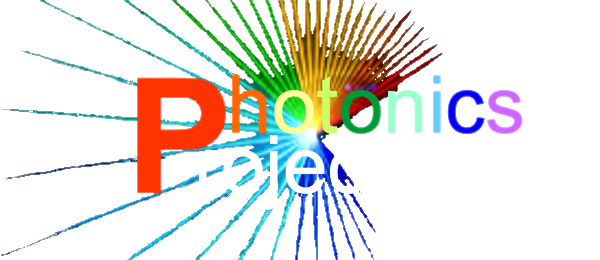
Dr. Jonathan M. Nichols is currently serving as the Associate Superintendent of the Optical Sciences Division (OSD) at the Naval Research Laboratory, Washington D.C. The OSD is comprised of roughly 200 scientists and engineers, performing research and development for the Navy and Department of Defense.
Jon received the B.Sc. degree from the University of Delaware in 1997 and the M. Sc. and Ph.D. degrees from Duke University in 1999 and 2002 respectively, all in Mechanical Engineering. As a scientist, Dr. Nichols worked primarily in modeling & analysis of infrared imaging devices, optical communications, signal and image processing, and system identification.
Photonics Project: Jon, as you know, we are busy working a Third Edition to the “Introduction to InfraRed and Electro-Optics Systems” Textbook (aka: The Red Book). Its due out early next year. As a co-author on the Second Edition why not participate in 3Rd edition?
Jon: My current responsibilities prevent me from investing the amount of time required to tackle such a project. In short, I wouldn’t be able to do a 3rd edition justice.
Photonics Project: Well, we would certainly welcome you onboard if you do get the chance. So then, tell us about your current role and what’s new and exciting at NRL?
Jon: I am currently the Associate Superintendent of the Optical Sciences Division at the Naval Research Laboratory in Washington D.C. We conduct a broad spectrum of R&D for the Navy spanning basic science through prototype development. Optical Sciences focuses mainly on technologies that generate, transmit, receive, and/or direct electro-magnetic energy in the microwave through ultraviolet wavelength range. Specific areas of interest include: emitters (lasers), detectors, optically transmissive materials, quantum devices, multi-int systems, infrared countermeasures, RF photonics, Integrated photonics, and directed energy.
Photonics Project: Great stuff, I am sure it keeps things interesting.
Did you take a look at the site?
Jon: Yes, I think the web site is fantastic and serves at least a few valuable functions. For those new to the field, it provides a simple interface to the kinds of calculations required of optical system design. For those more experienced system designers, it provides a convenient “one stop shop” for exploring the trade-offs (e.g., resolution/sensitivity) inherent in optical systems.
Photonics Project: What was a highlight on the site for you?
Jon: For me, having a diverse set of tools (e.g., MODTRAN & MTF calculations) in one place is quite convenient. When considering a particular optical system design, we would often find ourselves needing to perform some quick calculations to bound the design parameters. The web site facilitates precisely these types of quick calculations.
Photonics Project: What items needs more work?
Jon: Perhaps I’m being greedy here, but for Navy applications we are typically interested in range performance i.e., how far can we reliably (with a given Type-I error) detect and/or identify a particular target. The web site provides some of the key ingredients for such a calculation, but not to full completion. Maybe further down the road the full suite of this type of functionality can be added.
Photonics Project: What would you see as a future vision for the 3rd Edition Textbook and working interactively with the website:
Jon: I think having the flexibility to expand to a more diverse set of models (or improving existing models) is quite valuable. Because the calculations are being performed in “Python”, you have the flexibility to accept modules from researchers around the globe going forward. This will help provide an interactive online environment for learning and for improving the ease of doing these calculations.
Photonics Project: Yes, we are already receiving some notebooks from a number of University and Industry sources. With the open source nature of Python, and the internet generally, it will be simple for people to contribute and further extend the functionality of the site and associated GitHub.
Per that topic, where do you see things going from here? Both for the website and yourself, and/or otherwise….
Jon: For me, any tool that improves the scientific community’s ability to model and predict is a welcome addition. The ease with which one can now collect and “process” data can often detract from the hard thinking and modeling required to understand, predict, and ultimately harness a particular physical phenomenon. I’m hopeful that by making these types of modeling tools more accessible, greater progress in the field can be made.
Photonics Project: Jon, thanks a lot for your time and helpful comments!
